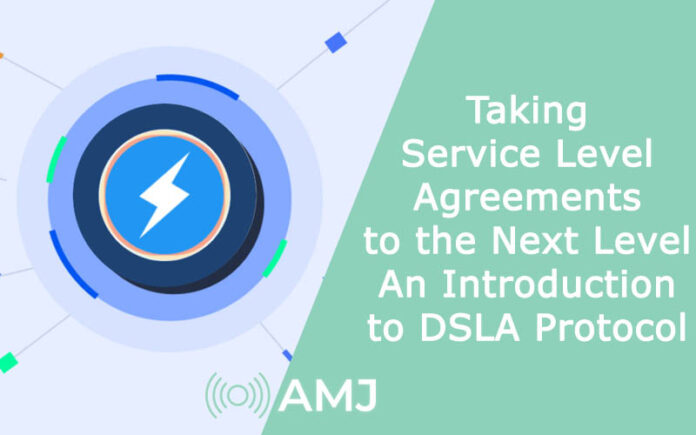Service Level Agreements (SLAs) are an essential aspect of business partnerships, ensuring that both parties meet their obligations and expectations. However, the conventional approach to SLAs has limitations that can hinder effective collaboration and resolution of disputes. To address these challenges, the DSLA Protocol offers a groundbreaking solution that takes service level agreements to the next level, incorporating innovative features and mechanisms for improved transparency and accountability. Bitcoin Profit, an online trading platform, is one example of how technology is revolutionizing various industries and transforming the way we conduct business. If you want to invest in bitcoins then you can learn more here
Contents
Understanding the Limitations of Traditional SLAs
Traditional SLAs are often based on subjective metrics and trust between parties, making it difficult to ensure transparency and fairness. Disputes arising from ambiguous terms or disagreements over performance can strain relationships and hinder business growth. Additionally, conventional SLAs may not adequately address unforeseen circumstances or evolving service requirements, leading to gaps in accountability.
Introducing the DSLA Protocol
The DSLA Protocol is a decentralized service level agreement framework built on blockchain technology. It aims to enhance trust, transparency, and accountability in service level agreements, revolutionizing the way businesses engage in partnerships. By leveraging the benefits of smart contracts, the DSLA Protocol introduces several key features that address the limitations of traditional SLAs.
Objective Metrics and Automated Verification
One of the core strengths of the DSLA Protocol is its ability to establish objective metrics for service performance. Instead of relying on subjective interpretations, the protocol incorporates measurable data, such as response times, uptime percentages, and other relevant key performance indicators (KPIs). This ensures that the evaluation of service quality is based on concrete evidence rather than subjective opinions.
The automated verification process enables real-time monitoring and validation of the agreed-upon KPIs. By eliminating manual verification, the DSLA Protocol reduces the risk of disputes arising from inaccurate reporting and provides a more efficient mechanism for resolving conflicts. This automation also streamlines the SLA management process, saving time and resources for all parties involved.
Smart Contract Escrow and Incentives
The DSLA Protocol introduces the concept of smart contract escrow to ensure that the obligations outlined in the SLA are met. Through the use of blockchain technology, funds can be held in escrow until predefined conditions are fulfilled. This feature provides financial guarantees and encourages service providers to deliver on their commitments.
Furthermore, the protocol incorporates incentives to motivate service providers to maintain high-performance standards. By rewarding those who consistently meet or exceed the agreed-upon KPIs, the DSLA Protocol fosters a competitive environment that drives continuous improvement in service delivery.
Flexibility and Adaptability
Unlike traditional SLAs that are often static and rigid, the DSLA Protocol offers flexibility and adaptability to address the dynamic nature of modern business requirements. Through the use of smart contracts, parties can define adjustable parameters and conditions that automatically adapt to changing circumstances.
For instance, if there is a sudden surge in demand or a need for additional services, the DSLA Protocol can facilitate the adjustment of KPIs and corresponding rewards or penalties accordingly. This flexibility ensures that SLAs remain relevant and aligned with the evolving needs of the parties involved.
The Benefits of Implementing the DSLA Protocol
Implementing the DSLA Protocol can unlock a range of benefits for businesses and service providers:
- Enhanced Trust and Transparency: By leveraging blockchain technology and objective metrics, the DSLA Protocol promotes trust and transparency among parties, reducing disputes and enhancing collaboration.
- Improved Service Quality: The protocol incentivizes service providers to deliver exceptional performance, leading to improved service quality and customer satisfaction.
- Efficient Conflict Resolution: With automated verification and predefined conditions, disputes can be resolved swiftly, minimizing disruption and maintaining positive business relationships.
- Agility and Adaptability: The flexibility of the DSLA Protocol allows SLAs to remain relevant in dynamic business environments, accommodating changes in service requirements and market conditions.
- Cost Reduction: The automation and efficiency provided by the protocol reduce administrative overheads and potential financial losses resulting from disputes or subpar service delivery.
Conclusion
The DSLA Protocol represents a paradigm shift in the world of service level agreements, empowering businesses to take their collaborations to new heights. By introducing objective metrics, automation, and flexibility, the protocol addresses the limitations of traditional SLAs and fosters a more transparent, efficient, and collaborative business ecosystem. Embracing the DSLA Protocol can propel businesses towards a future where service level agreements are not just contracts but transformative tools for success.












![Index of Money Heist [Season 1, 2, 3 & 4 – All Episodes, Cast and Plot] Index of Money Heist](https://www.asiamediajournal.com/wp-content/uploads/2021/05/Index-of-Money-Heist-3-100x70.jpg)